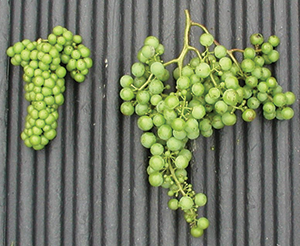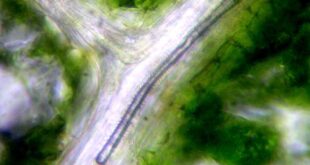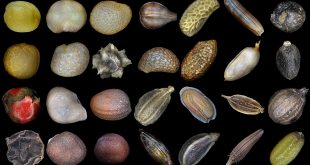Gibberellin
Gibberellins (GAs) are plant hormones that regulate various developmental processes, including stem elongation, germination, dormancy, flowering, flower development, and leaf and fruit senescence.1 They are one of the longest known plant hormones.
A key part of the Green Revolution during the 1960s, which saw crop yields more than double, was the development of new dwarf varieties, many of which were later found to have mutations in the GA pathway. (Know more)
Best safe and secure cloud storage with password protection
Get Envato Elements, Prime Video, Hotstar and Netflix For Free
Best Money Earning Website 100$ Day
#1 Top ranking article submission website
Discovery
- During early 1800s, Japanese farmers observed abnormal growths in early paddy plants. They were pale green, unhealthy and unusually long. They were also sterile. They named this disease as bakanae disease which literally means foolish seedling.
- Hori in 1898 concluded that the bakanae disease was caused by a fungal pathogen of the genus Fusarium (synonym Gibberella fujikuroi).
- In 1926, Kurusawa discovered that the disease was caused by a chemical secreted by pathogen Gibberella fujikuroi.
- In 1935, Yabuta isolated a compound from the same fungal species and named it gibberellin A. This compound was found to stimulate growth when applied to rice field.
- In 1954, the chemical nature of gibberellin was established.
- In 1961, Cross worked out the struc. of GA3.
Chemical nature
- Gibberellins are di-terpens. Synthsized from Acetyl CoA through Mebalonic Acid pathway.
- All have either 19 or 20 carbon units; mostly 20 and grouped into either 4 or 5 ring systems.
- All are acidic.
- Usually all possess one carboxyl group attached with carbon 7.
Distribution
Found in gymnosperms, angiosperms, ferns, probably mosses also. Available in very few species of fungi and bacteria. They have non-polar transport system (without diffusion transport) through xylem and phloem. They also require energy for transport.
Classification
There are currently 136 gibberellins identified from different organisms and named as GA1, GA2, GA3 and so on based on their serial of discovery. Here, the most common one is GA3 called Gibberellic acid which is the most commercially produced and widely used by scientists.
Physiological effect
- Stimulate stem elongation by cell division and elongation.
- Elongate the height of the dwarf plant in the internodal region.
- Stimulates bolting or flowering.
- Overcomes dormancy.
- Stimulates α-amylase enzyme production in germinating cereal grains.
- Can cause parthenocarpic fruit development.
Cytokinin
Cytokinins (CK) are a class of phytohormones that promote cell division, or cytokinesis, in plant roots and shoots. They are involved primarily in cell growth and differentiation, but also affect apical dominance, axillary bud growth, and leaf senescence.
Discovery
- Gottilieb Haberlandt in 1913 found a compound in phloem which have the ability to stimulate cell division.
- Johannes Van Overbeek (1941) ad discovered that milky endosperm of immature coconut had those compounds which promote cell division.
- D. S. Letham (1964) discovered one kind of cytokinin named zeatin from green plum.
- Carlos Miller (1964) discovered same compound from endosperm of maize.
Chemical nature
- They are adenine and amino purine derivatives.
- Have a side chain which has C and H in abundance and the side chain is attached with the N of purine ring.
- More than 30 free or unbound cytokinins are found.
- Zeatin is the most abundant and widely distributed natural cytokinins in higher plants and in some bacteria.
- Due to the presence of a double bond in side chain, Zeatin can exist either in trans and cis form. But trans form (trans-Zeatin) is predominant and most active biologically. They can be inter-converted by Zeatin isomerase enzyme.
Natural Cytokinin
- Zeatin.
- Dihydrozeatin (DZ)
- N6-(Delta 2-isopentenyl)-adenine (2IP)
Synthetic Cytokins
- Kinetin
- Benzyl adenine
- Thidazuron.
Distribution
Found in almost all higher plants as well as mosses, fungi and bacteria and also in tRNA of many prokaryotes and eukaryotes.
Occurrence & Translocation
Cytokinins are synthesized in the meristematic regions of plants. During seedlings, they are synthesized in roots and translocated upwards through xylem.
- Are found in abundance young roots, leaves and young fruits.
Physiological effects
- Induces cell division and cell enlargement.
- Induces formation of interfascicular cambium.
- Stimulates morphogenesis (shoot initiation/bud formation) in tissue culture.
- Breaks seed dormancy in some plants. For example, in lettuce, tobacco, light is required for inducing seed germination. But supply of cytokinin could stimulate breaking of seed dormancy even in dark.
- Can delay senescence in leaves. Provide good results in mature leaves than young leaves.
Source
- Featured image: https://winesvinesanalytics.com/features/article/168427/Benefits-and-Costs-of-Early-Leaf-Removal.
 Plantlet The Blogging Platform of Department of Botany, University of Dhaka
Plantlet The Blogging Platform of Department of Botany, University of Dhaka





